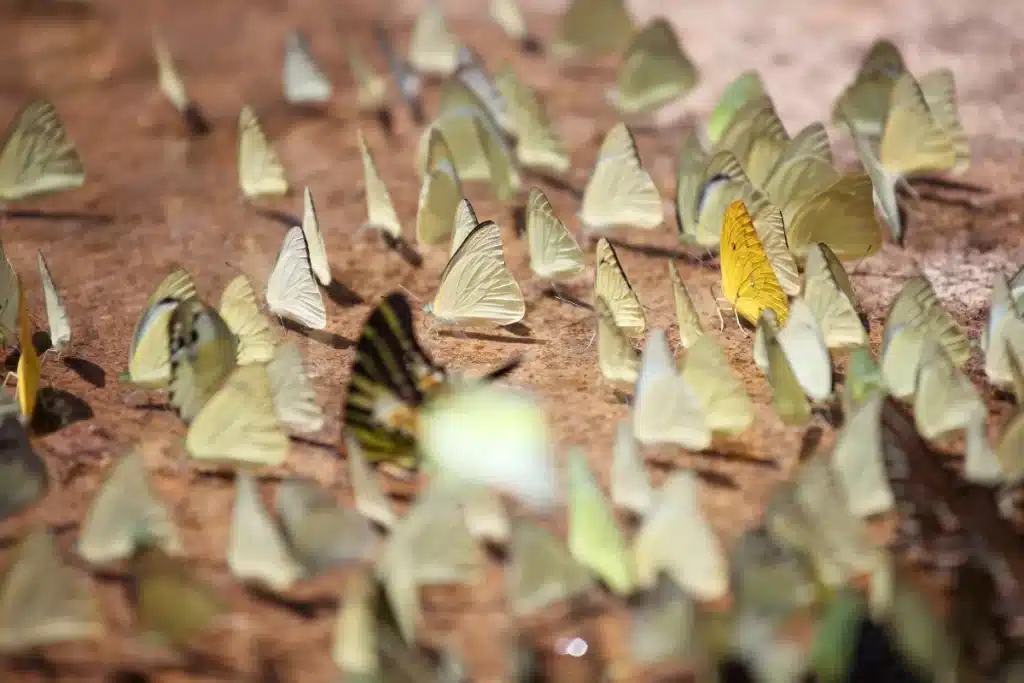If you’re a nature enthusiast or love trekking, you may have seen warning signs or heard rangers cautioning, “Do not enter the salt lick area.” While seasoned hikers may be familiar with salt licks, beginners may wonder what they are and why they’re off-limits. Let’s dive into the fascinating world of salt licks and their crucial role in wildlife ecosystems.
Table of Contents
What is a Salt Lick?
Salt licks, known as “Poeng” (โป่ง) in Thai, are low mounds or patches of reddish soil enriched with essential minerals that wildlife need. These areas are often marked by signs of animals, such as footprints or diggings. Animals like elephants, deer, and wild boars regularly visit salt licks to supplement their diets with minerals missing from their regular food sources. Think of salt licks as nature’s multivitamins for wildlife!
Types of Salt Licks
1. Earth Salt Lick
- Found as patches of mineral-rich soil.
- Animals dig into the topsoil and consume it, gradually deepening the lick, though it typically doesn’t exceed 1 meter in depth and 10 meters in width.
- Frequently located along streams or flat areas within valleys. Once depleted, animals migrate to another salt lick.
2. Water Salt Lick
- Often found at springheads or where limestone mountains release mineral-laden water.
- May appear as small pools or basins formed in soil previously rich in salt lick minerals.
- These areas are also typically located in flat terrains for easy access by wildlife.
Why Are Salt Licks Important for Wildlife?
Salt licks are vital to the survival of various species:
- Ecosystem Balance: Predators such as tigers and wild dogs use salt licks as ambush sites, ensuring a balanced food chain.
- Nutrient Intake: They provide essential minerals like calcium, magnesium, and sodium that help animals maintain health and thrive.

Why Should You Avoid Salt Licks?
1. Safety from Wildlife
Salt licks are wildlife hotspots. Approaching them increases the risk of close encounters with animals, which can be dangerous for both humans and animals.
2. Risk of Disease Transmission
Salt licks may harbor parasites or pathogens. Close contact can spread diseases to humans, while human activity can also introduce diseases to wildlife.
3. Disruption of Wildlife Behavior
Human scents left around salt licks can deter animals from approaching, depriving them of vital nutrients.
4. Conservation and Balance
Respecting these areas ensures that wildlife can coexist peacefully and ecosystems remain undisturbed.

Exploring Salt Licks in Kanchanaburi
If you’re intrigued but haven’t seen a salt lick up close, visit Accommodation near river kwai Kanchanaburi. Stay at accommodations like Hintok River Camp @ Hellfire Pass, offering nature treks that may lead to salt lick sites. This allows you to appreciate the marvels of wildlife conservation while enjoying a relaxing riverside retreat.

